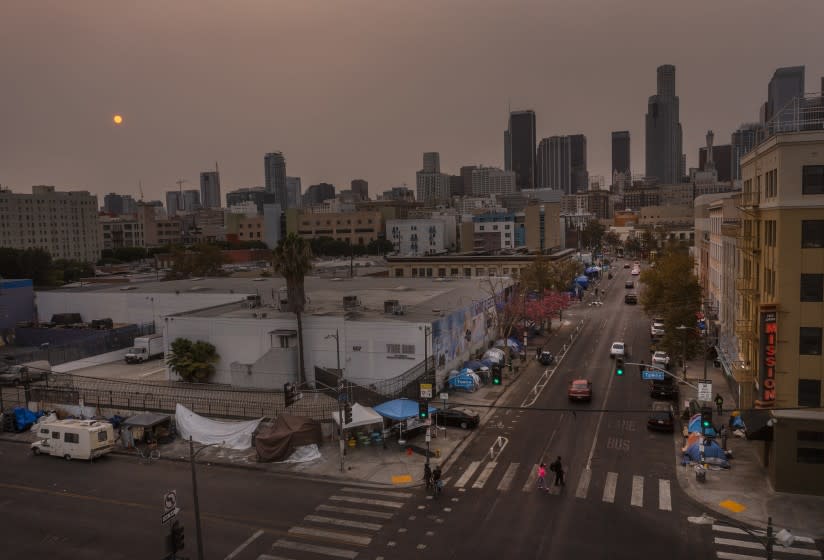Is the smoke blanketing L.A. dangerous? What can you do?

The smoke and haze that rolled into the L.A. area Thursday came from the Windy fire and the KNP Complex fire in the southern Sierra, meteorologists with the National Weather Service said.
The South Coast Air Quality Management District issued an air quality advisory, which is still in effect Friday, for the San Gabriel Mountains, San Bernardino Mountains and the San Jacinto Mountains. AirNow, which uses the official U.S. air quality index, reported the air quality in Los Angeles area to be moderate as of noon Friday.
The smoke might have faded since Thursday, but it's important to remember that exposure to wildfire smoke can be a health risk.
According to the Environmental Protection Agency, smoke is made up of a mixture of gases and fine particles produced when wood and other organic materials burn. The biggest threat from the mix is fine particles that can penetrate deep into your lungs.
High levels of fine particles can cause health problems, including burning eyes, runny nose and aggravated chronic heart and lung disease, according to the EPA.
The elderly, children and pregnant women are particularly susceptible to problems from polluted air. You're also at higher risk from smoke if you have heart or lung disease or diabetes.
Sara Rees, South Coast Air Quality Management District's deputy executive officer of planning and rural development, said fine particles aren't the only danger. In Southern California we also have to keep in mind how smog contributes to dangerous ground level ozone pollution.
Wildfire smoke contains some of the building blocks of ozone, she said, so when we get an intrusion of wildfire smoke, it can bump up already high ozone levels.
"The smoke we see in our area, it looks really hazy, but it's actually fairly high in the atmosphere. It's not necessarily at the level that we breathe," Rees said.
If you're looking to keep the air in your home clean from wildfire smoke, here are a few things you can do:
Monitor the air: Keep an eye on the air quality in your neighborhood by signing up for notifications from your local air quality district. For Southern California, that's the South Coast Air Quality Management District, which has a smartphone app, or national agencies such as AirNow.
Stay indoors: If the air quality in your community is poor, stay inside and close all windows and doors. Put damp rags at the base of doors or windows that could let in outside air.
Create a clean air room: Dedicate one room in your home to be a "clean room" by closing all windows and doors and running a HEPA air purifier. DIY air filters can also be safe and effective.
Stay safe outside: If you have to go outside, wear an N95 mask if you have one. Other face coverings are not as effective. Avoid outdoor exercise.
This story originally appeared in Los Angeles Times.

